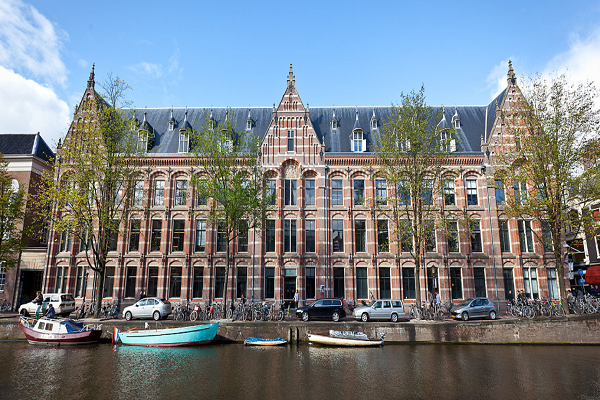University of Amsterdam: UvA PhD candidate and students win prizes at NFI Science Fair
According to the jury of the NFI Science Fair, the theme of De Bruin’s research is and remains topical because of the war in Ukraine. However, bringing the use of chemical weapons to light has always been relevant. It is also important to be able to establish the origin of the weapons used. This is where De Bruin wants to contribute using state-of-the art methods of forensic and analytical chemistry. ‘When someone is the victim of an attack with a chemical weapon’, she explains, ‘you can find small amounts of impurities in the blood. These can be raw materials that have not been fully reacted into the final lethal chemical, or contaminants from other products made in the same factory.’ Thus, the impurities can be seen as a specific marker of the preparation method and even the location of the chemical weapon production. ‘They can lead to a specific country, a production site, a specific production method or even the people who produced the weapon. All these aspects are forensically quite relevant.”
Using plants as an alternative
De Bruin conducts most of her research at TNO, the only place in the Netherlands where it is, under strict conditions, permitted to work with small quantities of chemical warfare agents. In the time to come she hopes to establish whether just a drop of blood taken from a finger might yield enough information about a chemical weapon. But she is also interested in the possible role of plants as sources of information. ‘It can take quite a while for researchers to get to the site of a chemical attack. If there are no more people to investigate, remaining plants might be a helpful resource. I want to see if we can retrieve information from plants that tell something about a chemical attack’, she explains. Other ‘remaining items’ can also be relevant to investigate. ‘Think of plastic remnants of an improvised explosive device, or chemical dispersion devices. Measuring the impurities of these items might also help to trace the origin of the weapon.’
A scanning table for trace analysis
In addition to ten research pitches by PhD candidates, almost thirty students presented the results of their (graduation) internship with a poster. The winner of these poster presentations was Josca Rouw, Master’s student of Forensic Science at the UvA. Two other students from the UvA’s Forensic Science programme shared the second place: Perle Russel and Britt Meijer.
Josca Rouw investigated the possibilities of a multidisciplinary scanning table, integrating different investigation techniques to be used simultaneously in one device. Josca explains: ‘The NFI wants to develop a table that scans an item, for example a T-shirt, to establish where traces are present. At the same time, the device should indicate what kind of traces are involved’. She evaluated three different possible analysis techniques for the scanning table, in a case study of urine on a black T-shirt. The judges were very appreciative of Rouw’s poster and its presentation, which were deemed visually appealing and giving a clear and organized picture of her research.

